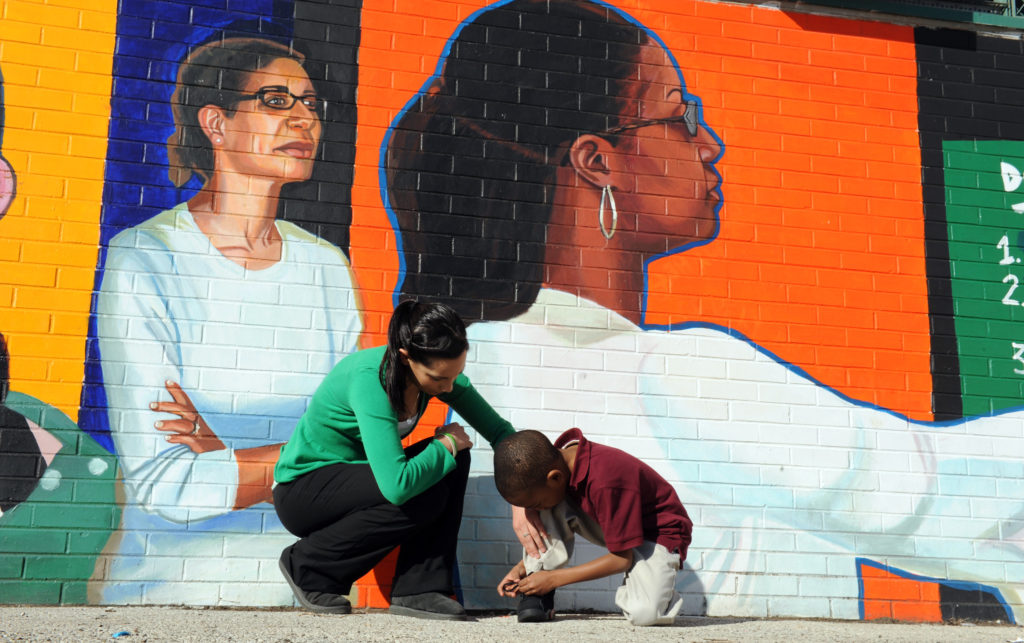Does every student deserve equity?
Teachers answer that question with a resounding yes. Afterall, teachers dedicate their careers to helping and guiding students academically and otherwise. As a teacher in Chicago Public Schools, my answer to that question is also a resounding yes. But it takes a lot of work, reflection, and commitment to live that value every day.
To support every student and to address the systematic ways in which students, especially students of color and low-income students, are left behind, teachers must reflect—and ultimately act—on what they bring to the classroom, how those biases play out in the classroom, and how the race, income, neighborhood, and background of students affect student outcomes.
Reflection will not only help teachers lead their classrooms with the love, patience, and equity needed, but also help to untangle an education system that has been steeped in systematic racism. Teachers must not stop at identifying what they believe, but live what they believe.
I studied at the University of Chicago Urban Teacher Education Program (UChicago UTEP), where we confronted the biases that teachers bring to the classroom. In UTEP’s “Soul Strand” course, we dedicated a year of study to understanding and establishing the ways in which we developed into the people we are and how that manifests in the classroom. Growing up in a predominantly Black church community in California within a mixed-race family, I had thought a lot about my identity before landing at UChicago UTEP. I didn’t realize that I still had a lot of reflection and soul searching left to do.
The UTEP conversations—often full of passion and tension—asked how race, religion, economic status, sexuality, and neighborhood currently determine student outcomes. I acknowledged my own biases that I had gained from my own public and private school experiences—my belief that public schools were not places to thrive, experience academic rigor, or find long-term social and academic success.
In UTEP, I solidified my sense of who I was as a teacher and graduated believing that every student deserves every opportunity that life can afford them, regardless of class or race—and that opportunity can be cultivated in traditional public schools. By naming and studying how the current U.S. education system works for and against students, I worked to avoid falling into common traps that teachers bring to the classroom, from deficit thinking to a savior complex.
But it was much harder once I was at the helm of a classroom.
Settled questions of who I was and what I was doing felt suddenly unsettled. These questions took on a new sense of urgency and relevance. What I theorized and debated at UTEP became my reality, all while a classroom of 30 students were looking to me.
I found that asking evocative questions and providing challenging texts and writing prompts was not enough. Classroom management was a struggle, and I found the deficit thinking that I worked so hard to reject was suddenly creeping into my work. It is a very different question to ask, “Does every student derserve patience and equity?” when sitting with peers in a master’s program versus standing in front of a ten-year-old who has just rolled their eyes or a twelve-year-old who just cursed you out. I found myself resorting to poor practices—mirroring the teacher I had sworn against becoming instead of the one I envisioned being. I felt so defeated that I began doubting my decision to teach.
While everything that I had learned and come to believe in Soul Strand was true, beliefs and aspirations were not enough. I needed greater support and a community to fuse these truths into my teaching, which I found in my father (a former elementary teacher) and my UTEP coach. Their voices reminded me to hold onto every victory, focus on one goal at a time, and meet students where they are. I did not have to be everything I envisioned in my graduate program at once: I realized the work, and the key to squashing deficit thinking, is about living my values in daily choices and goals—taking time to understand students’ own hopes, dreams, interests, and proficiency levels, one day and step at a time, versus expecting them to live up to my own lofty goals and expectations.
Being a teacher is hard, and our biases and the overwhelming responsibility of teaching can throw teachers into survival mode where deficit thinking is easier than confronting how we are contributing to a system that works against some students. But with strong study into the biases that teachers bring and that the system perpetuates, along with mentorship to live your values every day, teachers can be both humbled by the work and successful for each of their students.
Excellent teachers do not start as the people that they believe they should be, but goal by goal, truth by truth, day by day, they can do great things for all students.
It takes courage to open up and look at the biases you bring to the classroom. But the stakes are too high not to.

1 comment for “It Takes Courage and Community for Teachers To See Their Own Biases”